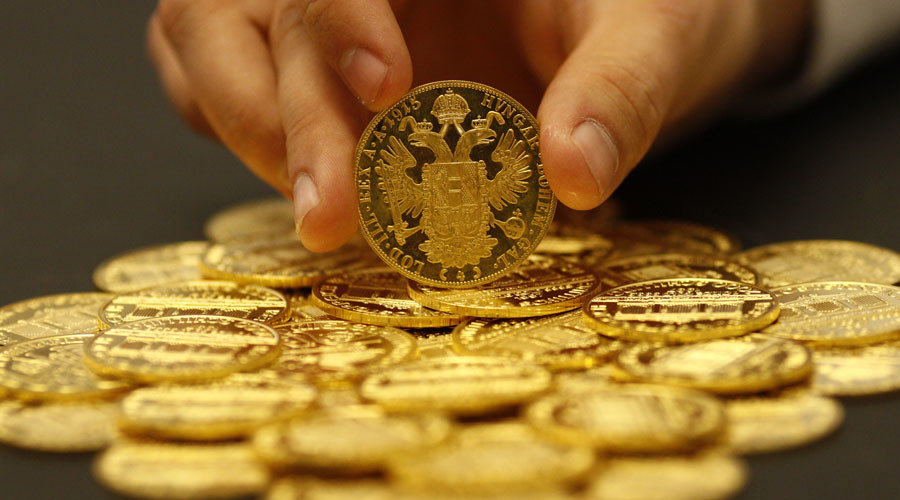
© Leonhard Foeger / Reuters
On Wednesday, gold reached its highest level in 33 months outperforming many other commodities as well as S&P 500 index. The precious metal peaked at $1,372 per troy ounce.
The rally of another precious metal has been even more impressive. The price of silver since the beginning of the year has gained almost fifty percent, trading at over $20 per ounce as of Thursday.
According to the World Gold Council, the marketing organization for the industry, rising gold prices are a result of failed monetary policies."A weak Japanese bond auction on August 2 unnerved markets, pushing the gold price up 29 percent for the year in US dollar terms. Many analysts are interpreting weak Japanese government bond demand as a signal investors are starting to lose confidence in the effectiveness of unconventional monetary policies, following increasingly desperate bids by the world's central banks to reflate the global economy," the organization
published on its website.
"In this environment, we believe investors are using gold to hedge portfolio risk as they add more stocks and low quality bonds to their asset mix."
The Council also points to low global bond yields as another reason why investors are seeking gold.According to the report, currently close to 40 percent ($10 trillion) of high quality sovereign debt is trading with a negative yield. But this masks the fact that a significant amount of the developed market (DM) sovereign debt is unavailable to investors. More than a third ($9 trillion) currently sits on central bank balance sheets as part of their asset purchase programs.
"In reality, we estimate that less than 40 percent of DM sovereign bonds ($10 trillion) have a positive yield and are "available" to investors, while only 17 percent ($4.4 trillion) is yielding more than one percent. In our view, lower opportunity costs and a more limited set of investable assets has, in turn, notably increased the lure of gold," says the WGC report.
The negative correlation of the US dollar and gold as well as the economic backdrop will send the bullion even higher, according to EAM Partners CEO Victor Sperandeo, as quoted by CNBC.
"If you believe the dollar is going to come down because of weakness in GDP and weakness in the economy before the election, there'll be no increase in rates. Gold will go higher," said the manager.
Experts revised their projections upwards. UBS forecasts $1,400 an ounce by the end of the year with Credit Suisse and Bank of America Merrill Lynch pinning it at $1,500 an ounce over the next six months.

Comment: This news will also propel the gold and silver prices higher: Desperation? Bank of England cuts interest rates for first time in seven years, extends QE